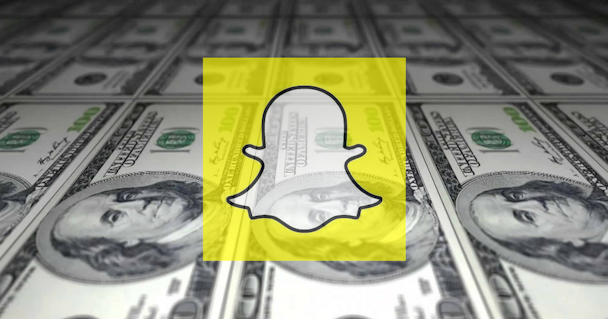What drives post-IPO euphoria in tech, and is it really sustainable?
The much anticipated market correction to Snap’s stock price has started to take effect after it debuted on the New York Stock Exchange a week ago. While Snap's share price had peaked at $27.09, since then they have slumped as much as 12% in a single day, in a cycle that’s familiar to this monitoring the space. The Drum asks why such post-IPO tech bubbles continue to occur, despite countless disappointing examples beforehand.

Snap's stock price rose above $27 per share in the early days after its IPO
Snap’s stock price debuted at $17 per share, with influential financial analyst Brian Wieser of Pivotal Research leading a horde of his contemporaries in his assertion that in the early hours after its IPO, the Snapchat’ parent was “significantly overvalued”.
Pivotal’s Wieser went on to suggest that a $10 valuation was a more reasonable assessment of the social media outlet’s price, but this did little to prevent its stock surpassing more established players, such as American Airlines, Hershey’s and Hilton in a move indicative of the frenzy that quickly follows a tech IPO, albeit this often results in a hard luck story.
Wieser based his assessment on the “significant risks” despite Snapchat being “behind an innovative, large-scale, and distinctively young-skewing platform which is establishing itself as a magnet for business unit talent and content partners alike.”
However, the hype continued to pay off for Snap, and in the early days after its IPO the social media giant’s stock price continued to soar.
This is despite earlier examples of similarly-profiled companies such as Facebook and Twitter experiencing a euphoric bounce post-IPO, only for it to crash by as much as 50% three months in to their existence on the public markets. While Facebook has proven that it is possible to recover from such a setback, Twitter, as well as countless publicly-listed adtech outfits, have not been as fortunate. So why does this cycle keep repeating itself?
Jonathan Mendez, chief executive officer at adtech outfit Yieldbot points out that while the last week has seen a lot of speculation, it’s still nothing in comparison to “the bubble” during the late 1990s and early part of this century.
“Investors make money on the way up, as well as on the way down,” he says, adding that the IPO of Facebook and Google were special cases, and that Snap’s stock price is likely to achieve more constancy after a number of quarters.
“Twitter was able to hang in for a bit, but it has since petered out,” adds Mendez. “People will start looking at a few quarters of hard data.”
Ciaran O’Kane, an adtech expert and chief executive officer at ExchangeWire, adds that Snap’s IPO was likely the “liquidity moment” early stage investors, and he also points to NBCUniversal parent ComCast’s $500m investment in Snap stock on the opening day of its existence as a publicly traded company. Given that the stock price debuted at $17 and later surpassed $27 per share on its second day as a publicly listed outfit, it’s plain to see the gains of cashing in on such euphoria, according to O’Kane.
“The big question to ask is whether or not there is enough liquidity in the market,” he says, adding that one crucial move that Snap will have to get right is investing in new products.
“You just look out there, and you can see there’s a lot of competition. For instance, Facebook could bleed them dry,” adds O’Kane, pointing out that the recent Instagram Stories update is likely to rob Snapchat of it unique selling point to brands when it comes to its appeal to advertisers.
However, he does laud the ‘fun factor’ of Snapchat, something that has thus far been at the core of its appeal to younger audiences, although it also has traction with older audiences (see chart below).

O’Kane also points out that going on the public markets gives Snap an opportunity to rival the likes of Facebook and Google when it comes to advertisers’ budgets. “The stock price [rise] was basically the market betting big on the two cofounders [Evan Spiegel and Bobby Murphy]… If the markets give them the chance to survive (just as they did with Facebook) it would be good for the industry,” he adds.
Gareth Davies, chief executive of adtech outfit AdBrain, agrees with O’Kane’s assertion that the euphoria in the immediate aftermath of the IPO was a major testament to the importance of the company’s cofounders, albeit he also points out that there is often a mismatch between hype and reality.
“Ultimately, there was an incredibly hungry market, as there was no social IPO since 2013 [with Twitter], so there was a lot of anticipation out there, but what we are now starting to see is that the institutional investors, such as pension funds, are now investing at scale [in tech stocks]. Ultimately, they’re betting on the vision of the cofounders, as well as their ability to innovate over time,” he concludes.

